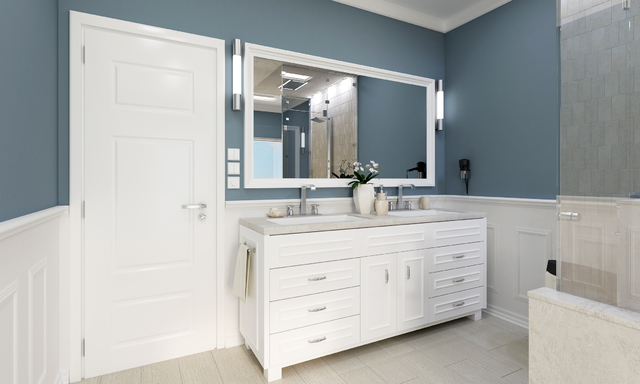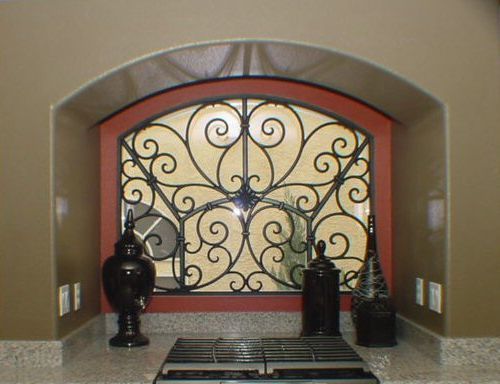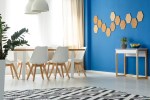Look at all room elements before choosing paint color
Dear Gail: We’ve been meaning to repaint our home but just never seem to get to it. We put a lot of holiday decorations around the house, so my normal accessories and even artwork have been taken down. Plus we put up three Christmas trees. I know, crazy, but we love it. So we’ll have to move the furniture around again and figure it will be a good time to at least start. We’re not looking for crazy changes but want to freshen it up and be more adventurous with color. Any suggestions or advice would be appreciated. — Marjorie
Dear Marjorie: It sounds like your home is a winter wonderland. And, wow, three Christmas trees, I don’t even have one up. With many things already put away, it would be a great time to paint those walls and bring in the New Year with a bang.
First, before you head out to the paint store, literally look at a thousand colors, stop and make a plan. Some things to consider are: What are the undertones of your fixed items, such as flooring and cabinets? What do you want to draw attention to? Do you have a fireplace, gorgeous view out your window or an amazing piece of artwork? What about architectural features? Do you have niches, columns or coffer ceilings? Are you concerned you’d tire of a color? And always take into consideration your furniture and how it will flow into adjacent rooms.
I also want to advise you about being thoughtful on painting everything your favorite color. You have to make sure it works with the elements in your room. It absolutely should be part of your plan but possibly not the main paint color.
With your plan in hand, head out to your favorite paint store. To help narrow down your choices, match each color that is already in your room to a sample. Look at these colors and see which ones you are most strongly drawn to.
Then you can use that exact color or go lighter or darker on the color strip. If you want a contrast in color, you need to go at least two tones apart, otherwise, they will appear the same. Remember, you do not have to paint all of the walls the same color. Think of those accent areas, architectural features and focal walls you have.
It is also important to have a continuous and harmonious flow from room to room, especially those that are open to each other. These rooms need to have a common theme, mood and style, along with color scheme. Look at your architectural details for natural breakpoints and areas where you can change paint colors.
Color also affects the perceived size of a room. You can manipulate the visual effect in a room with your color and paint selections.
A general rule of thumb to follow is that light colors will expand or make a room appear and feel larger, whereas dark colors will retract or make a room appear and feel smaller. A monochromatic and flowing color scheme will make an area larger, while multiple colors and color changes from room to room will appear smaller or busier.
Another area to consider is your ceilings. By painting your ceilings, you are decorating each dimension of your room: floors, walls, windows, furnishings and the ceiling.
Contrary to what most people think, painting ceilings can make a room look larger. If you’re painting your walls a lighter color, by painting your ceiling the same color, it will lift the ceiling and visually expand the space. When you eliminate the line between your wall color and ceiling, your eyes don’t stop at the top of your wall but continue onto the ceiling and around the room. I have no problem painting a 7- or 8-foot ceiling the same color as the walls.
Don’t be afraid to paint it a completely different color. An easy way to do that is to use the same tone on another paint strip. So if using the third color down, select a color from another color strip, the third color down.
If this frightens you, give it a try in your powder bath and see how you like it. That’s one room I do like to be more adventurous with. Be bold, be different and impress your guests.
If you’re concerned about tiring of a color, a simple solution is to use the color on the accents in your room. This way, when you are ready for a change, you will only have small areas to repaint.
Some of these accent areas are niches, door arches, plaster pop-outs or any other architectural feature your home may have. If you don’t have a full backsplash in your kitchen, it’s a great place for that pop of color.
Here’s a brilliant paint tip my girlfriend did. To remind her what paint she used, she wrote it on the back of a switch plate in every room. Great idea for when you want to do touch up and didn’t keep the old paint can.
Gail Mayhugh, owner of GMJ Interiors, is a professional interior designer and author of a book on the subject. Questions may be sent by email to: GMJinteriors@gmail.com. Or, mail to: 7380 S. Eastern Ave., No. 124-272, Las Vegas, NV 89123. Her Web address is: www.GMJinteriors.com.





























